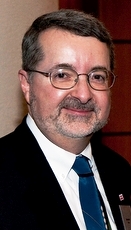(Editor’s Note: This is the first of a regular series of features on B2B communications by Mary Buhay of Gibbs & Soell PR.)
Gone are the days when B2B might have stood for “boring” and “business.”
Today’s business-to-business communicators must use more innovative ways to engage their distinct audiences in corporations, government agencies and institutions. And they have their work cut out for them.
Cultivating and nurturing relationships is no easy task when business transactions can span from the earliest stages of a supply chain to retailers, distributors and employees—the groups that border the consumer universe. A B2B communications strategy must deftly manage and monitor the complex flow of information among these important stakeholders.
To learn more about B2B strategies, we’ll be featuring in PR News on a bimonthly basis Q&A’s with B2B communications experts. Our first question was inspired by the results of a new report that finds that nine out of 10 B2B organizations consider content to be critical to their marketing mix.
According to a study from Junta42 and MarketingProfs, 1,100 (79%) North American marketers pointed to social media (excluding blogs) as their top tactic, followed by articles (78%) and in-person events (62%).
We turned to a diverse group of communications executives from the financial services, manufacturing, agribusiness and energy sectors with this question:
How has digital/social media communication moved the business needle at your organization?
Alayna Francis
VP, Communications,
Swiss Re America Holding Corporation

Though my company is in the process of developing social media guidelines and strategies, we have used social media to move the needle on one niche topic. Generally speaking, reinsurance is a multi-layered topic which sometimes can be a challenge to communicate on a broad scale.
Last year, a reinsurance tax proposal was reintroduced which, if enacted, would have significant financial ramifications on the reinsurance sector. My company needed a simple way to communicate to various audiences why this proposal would have a negative impact on both the private sector and on the U.S. at large. We developed a YouTube video, which was promoted through both traditional and social media channels.
The results were 22,000 video hits, extensive media coverage and an anecdotal wave of comments industrywide. The opposition responded with its own rebuttal video, which garnered few views and little credibility. Our message, delivered through social media, resonated much more deeply with target audiences and helped further our position.
Michael Bazinet Director, Corporate Communications & Public Affairs, Terex Corp.
Terex operates in a traditional industry that is learning to use social media. Because we make and sell expensive equipment, our customers want to kick the tires before they buy. Still, we have several sales pending that started with social media leads.
We’ve also resolved an issue for a customer who was complaining on a social site about his equipment. We looked into what he was saying, found he had a case, took the matter offline and resolved it. Unprompted, he went back on that site and told everyone that Terex had exceeded his expectations. How do you beat that reaction?
Recently, we were told by a serious investor that he first found us on Facebook. We’re also working with our trade associations to use social media to encourage Congress to enact a new surface transportation bill. So, the needle might not be jumping into the red zone, but it is moving at Terex.
Marisa Jacobs
VP, Corporate Communications & Investor Relations, Covanta Energy

Information now spreads globally in real time, which has a profound impact on our efforts to manage our reputation. We are becoming much more focused on utilizing social media to ramp up our communication with stakeholders about all of the activities we engage in that benefit our client communities and the environment overall.
At the same time, we are examining and developing new approaches to engaging with critics of us and our technology, as they can now collaborate and share information much more easily than in the past. As a tool to drive business, we have not yet adopted social media techniques and are in the early stages of completing the analysis needed before a detailed roadmap is developed.
Sue Otten
Director, Corporate Marketing & Brand Communications Worldwide,
AGCO Corp.

Social media is shifting communications from the planned, controlled, corporate practice to a more dynamic, engaging conversation. It is rather amazing to hear so much discussion about the benefits (or lack thereof) of this new channel. Were there similar concerns when radio was introduced or when corporate Web sites first appeared?
Social media is an inexpensive, fast and easy communications tool opening up access to key stakeholders. For AGCO, we are attracting younger customers, which is important as our average demo gets older.
AGCO is using social media to provide information to our customers in an interactive and engaging way: posting information and pictures to Facebook encourages conversations from around the world; adding video to YouTube shares our products in a more realistic way; online chats give direct access to our product experts; and our blog shares industry and company-specific news in a way that invites customers to ask questions and learn more.
Mateo Chaskel
Social Media Manager,
Urban Green Energy

The emergence of social media in recent years has added a new dimension to the world of marketing. At a renewable energy start-up like Urban Green Energy, in particular, social media plays a vital role in exposing the products we offer to our customers and is very much responsible for allowing us to develop into the international company we are today. For no cost at all, our social media sites are visited by more users than we reach through all other methods of advertisement.
With social media we are able to tap into a global market that is already interested in the type of renewable energy we offer, increasing both exposure and the quality of our audience.
Being able to communicate with these potential customers and create opportunities for them to interact with each other in a unique setting increases brand recognition of our company and, ultimately, augments sales of our wind turbines. PRN
[Editor’s Note: Looking for more articles on real-world uses of social media? Visit PR News’ Subscriber Resource Center at www.prnewsonline.com/subscriber_resources.html.]
CONTACT:
Mary C. Buhay is VP of marketing & business development at Gibbs & Soell Public Relations. She can be reached at [email protected]

